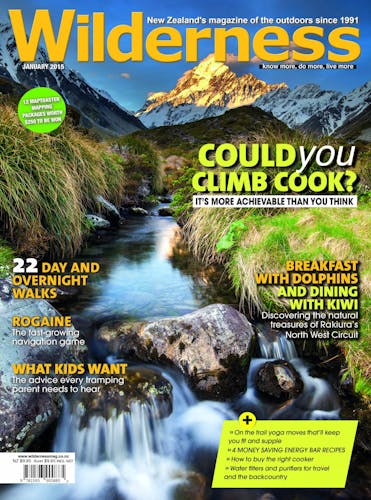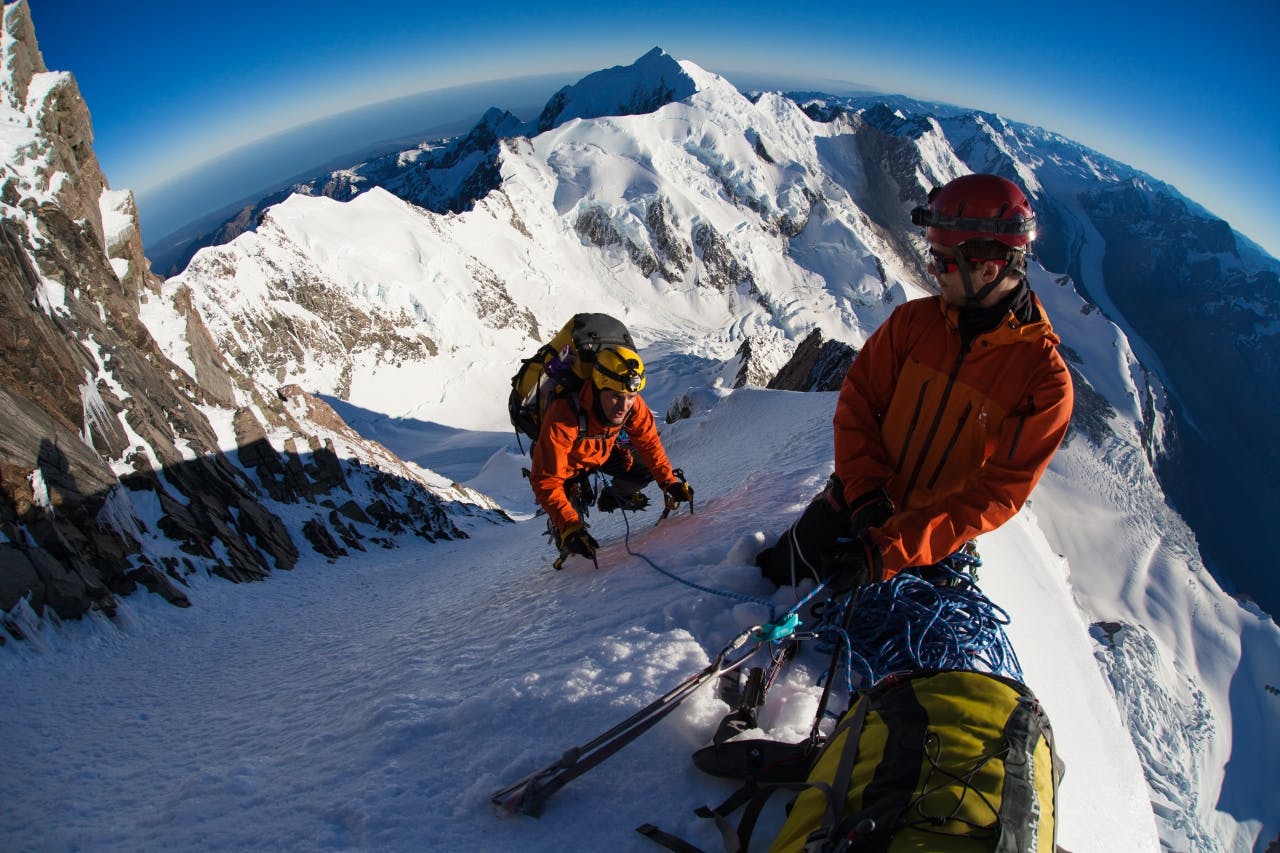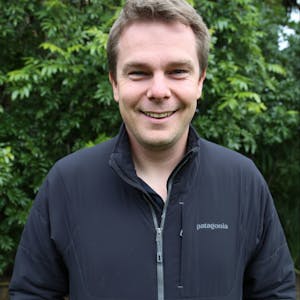What would it take for a tramper of average fitness to propel themselves to the top of New Zealand’s highest summit? Wilderness finds out
In 2009 British comedian Eddie Izzard ran 43 marathons in 51 days. If an endurance runner achieved this, it would be remarkable. But Izzard was no athlete. He was a slightly overweight fitness-phobe in his late 40s. He hadn’t run since school and he spent just five weeks training for the ordeal
In most people’s minds, these factors seem to take the likelihood of completing the task from ‘highly improbable’ to ‘just impossible’. Yet, through extreme bloody mindedness and perseverance, he succeeded.
Wilderness was reminded of this achievement when we received an email from Dan Kearney. Dan is a keen tramper but is also a self-confessed 115kg beer-loving smoker. But he’s set himself a goal that within 12 months he’ll get himself fit enough to climb Aoraki/Mt Cook and raise funds for Men’s Health.
This got us thinking; most keen trampers have probably never thought it possible that they could climb New Zealand’s highest summit – just as the majority of runners would never think it possible to run 43 marathons in 51 days.
Tramping the Pouakai Circuit, the Rees Dart Track or the Travers Sabine is one thing, but climbing Aoraki is another level altogether. Terms such as ‘crevasse’, ‘ice wall’ and ‘avalanche risk’ are enough to keep most trampers below the 2000m mark. Add to that the level of fitness required, and a trip to the Abel Tasman Coast Track seems far more plausible.
But what would it take for an average tramper who does, say, 10-20 day or weekend trips a year with the odd longer one thrown in, to get themselves up to the country’s apex? Would you need years of training and perfecting technical mastery or is it feasible to climb it within 12 months while maintaining a full-time job and family?
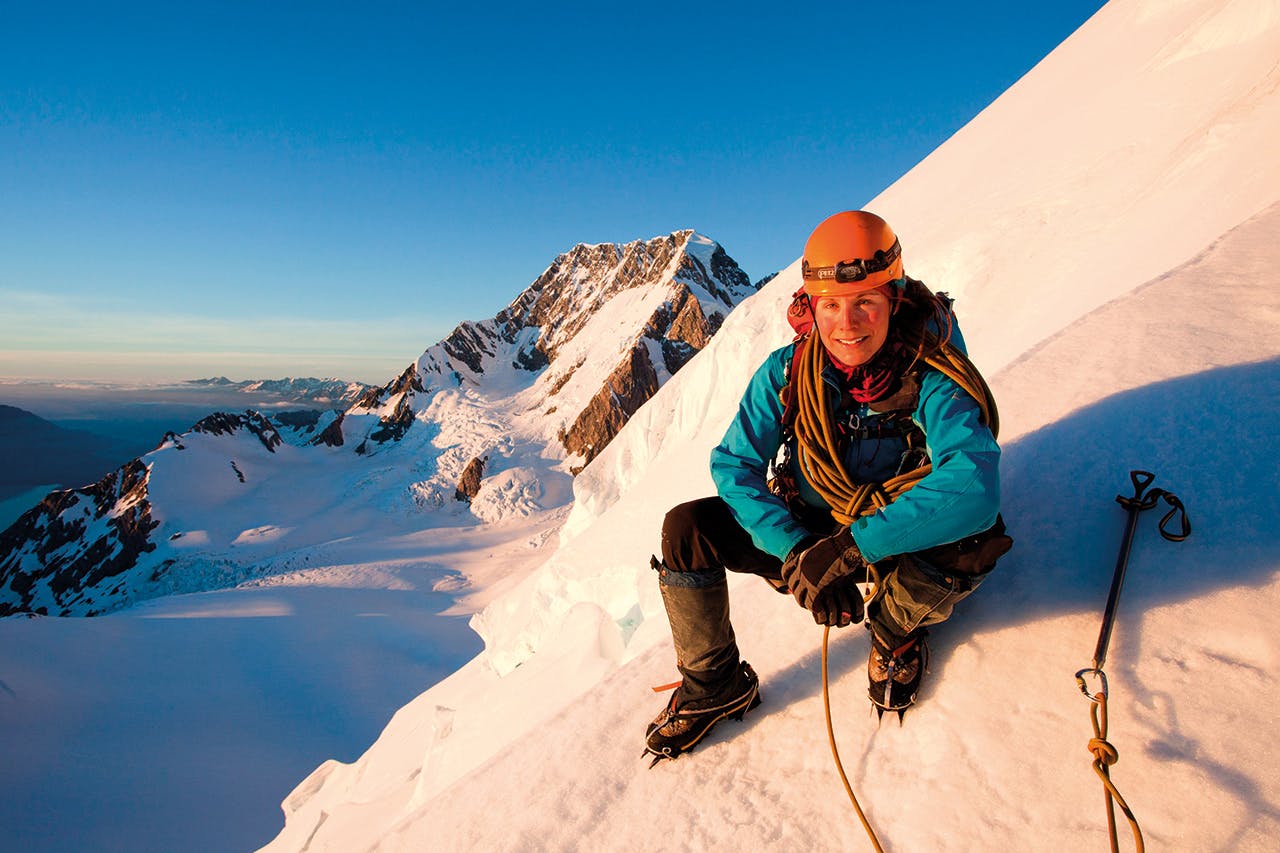
Elke Braun-Elwert on Mt Dixon, with Aoraki/Mt Cook behind. Photo: Supplied
One who’s very qualified to tell us is Elke Braun-Elwert. The Outdoor Recreation guide became, at 14, the youngest person to have ever summited Aoraki. Now 31, she guides people up the mountain.
Braun-Elwert says an experienced tramper could be ready to climb it guided within a year, but to do it without a guide would take considerably longer.
“We get a lot of climbers who have technical skills and are physically able to do it, but the decision making and judgement process takes a lot longer,” she says. “That’s where there’s no substitute for experience. For guided trips, you’re paying for the judgement and decision making of the guide.”
Outdoor Recreation would never take someone up the mountain unless they had completed a six-day intermediate climbing course. After that, some are ready but others require an advanced course or a shot at an easier peak.
“Mt Cook’s more technical than people think it is,” explains Braun-Elwert. “The technical crux is quite short, but is high up the mountain – at around 3000m – so climbers are tired when they get there. It can be different every time you go there and only experience will allow you to know which technique to use.”
But she says experienced trampers have a great advantage over others who want to climb.
“Most Kiwi trampers have a solid background – they’re competent over rough terrain – a lot of internationals aren’t. Kiwis tend to have a good base to work from and they pick up the technical skills quickly.
Braun-Elwert says a high level of fitness is important and, with 14-18-hour days comon, an ability to tramp for 12-14 hours a day is essential. “It’s a big slog,” she says.
Training should involve good cardio exercise. “Try heading up a steep hill with a pack of full water bottles and empty them out at the top so you’re going lightweight on the way down, so as not to damage your knees.
“A good way to prepare for wearing crampons on the rough ground is to boulder hop at the beach, putting your feet at different angles, letting the foot rotate and helping to build ankle strength and support muscles.”
One tramper who was relieved to have prepared well for his climb of Aoraki in 2011 was Mike Fyfe. He had big shoes to fill; his great grandfather Tom Fyfe was among the first party to ever reach the top of Aoraki in 1894. Mike was the first member of the Fyfe family to repeat the feat.
Never having done alpine climbing previously, he was concerned about the level of fitness needed so as not to put anyone at risk. He discussed his concerns with his guide Marty Schmidt. “He said I should aim to be able to climb 1000m with 20-30kg on my back and be able to run 10km without stopping,” recalls Fyfe, who was living in Perth, Australia, at the time. His fitness regime included waliking up and down a 50m staircase in the middle of town carrying bottles of water. He also went running twice a week.
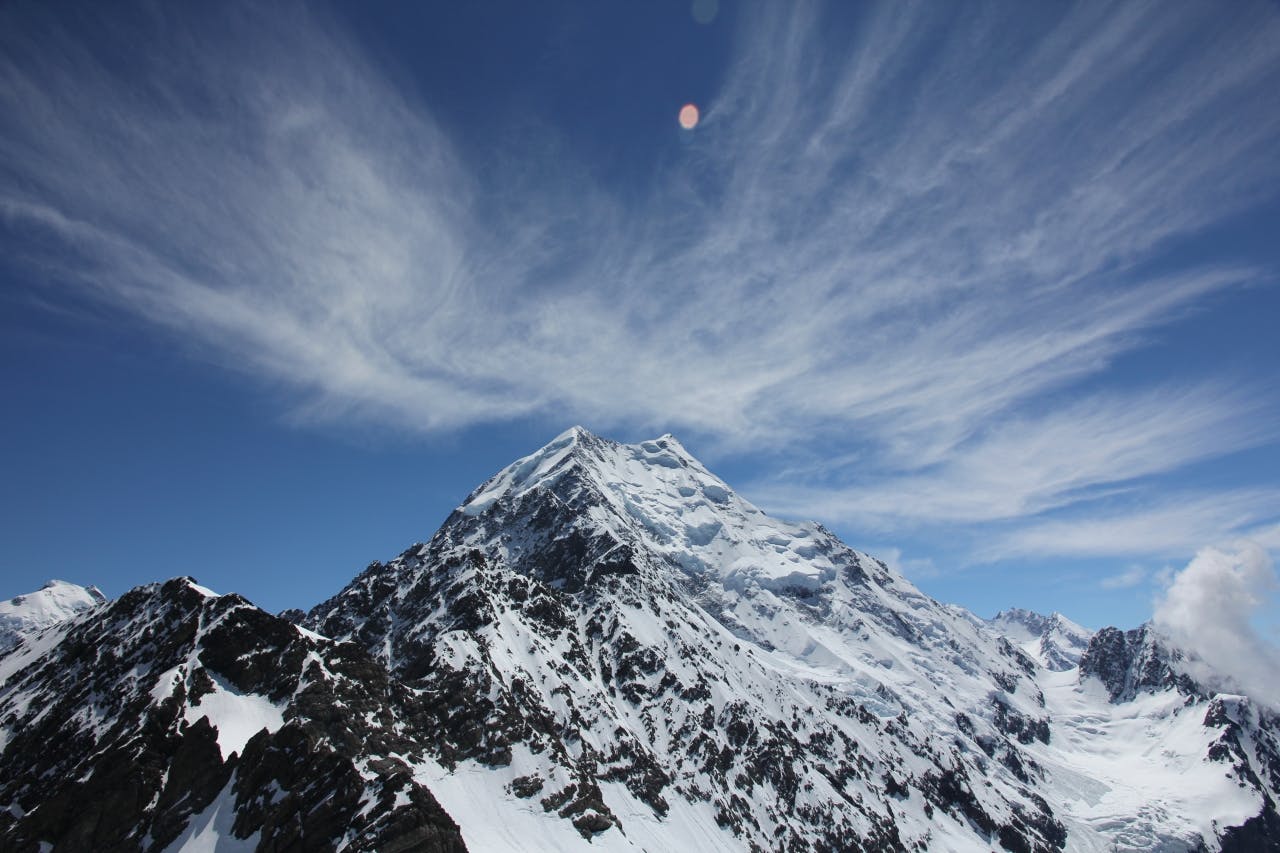 “The minimum required is not unachievable,” says Fyfe, “but I wanted to be over that basic requirement.”
“The minimum required is not unachievable,” says Fyfe, “but I wanted to be over that basic requirement.”
Fyfe, who was brought up in Blenheim and now lives in Auckland, spent a year preparing for the climb, taking an intermediate climbing course shortly before the ascent date. He learnt the mountain skills quickly and discovered his fitness was easily enough to get him to the top – but he needed all his reserves on the way down.
“We’d had a few issues going back down and we didn’t quite make it to Empress Hut,” he explains. “We were just 150m short but with massive crevasses in the way. It was getting dark and a storm was on its way.”
The storm was savage and Fyfe and Schmidt were stuck in the tent, without sleep, for a day-and-a-half.
“When there was eventually a break in the storm,” says Fyfe, “the 150m dash really took it out of me and I could see why I needed to be fitter. When I reached the hut I was so glad of the extra work I’d put in – without it, I’d have been really struggling.”
Fyfe describes the trip as the best adventure he’s ever had. “It’s an amazing thing to have done for my family and myself. Getting to the top was the best bit – I spent a couple of minutes thinking about Tom climbing it a hundred years before me and wondering how he did it with the equipment he had – it blows me away.
“It’s breathtakingly awesome up there. It makes the hair on the back of my neck stand on end just thinking about it. If you want to climb Mt Cook don’t let fear of the unknown stop you from doing it – it’s very do-able for anyone who wants to climb it.”
Fyfe hopes one day to climb the mountain with his son Freddie. “Freddie’s only just turned one and he’s already climbed to the top of a six-foot ladder when our backs were turned – he’s got Tom Fyfe in his blood!”
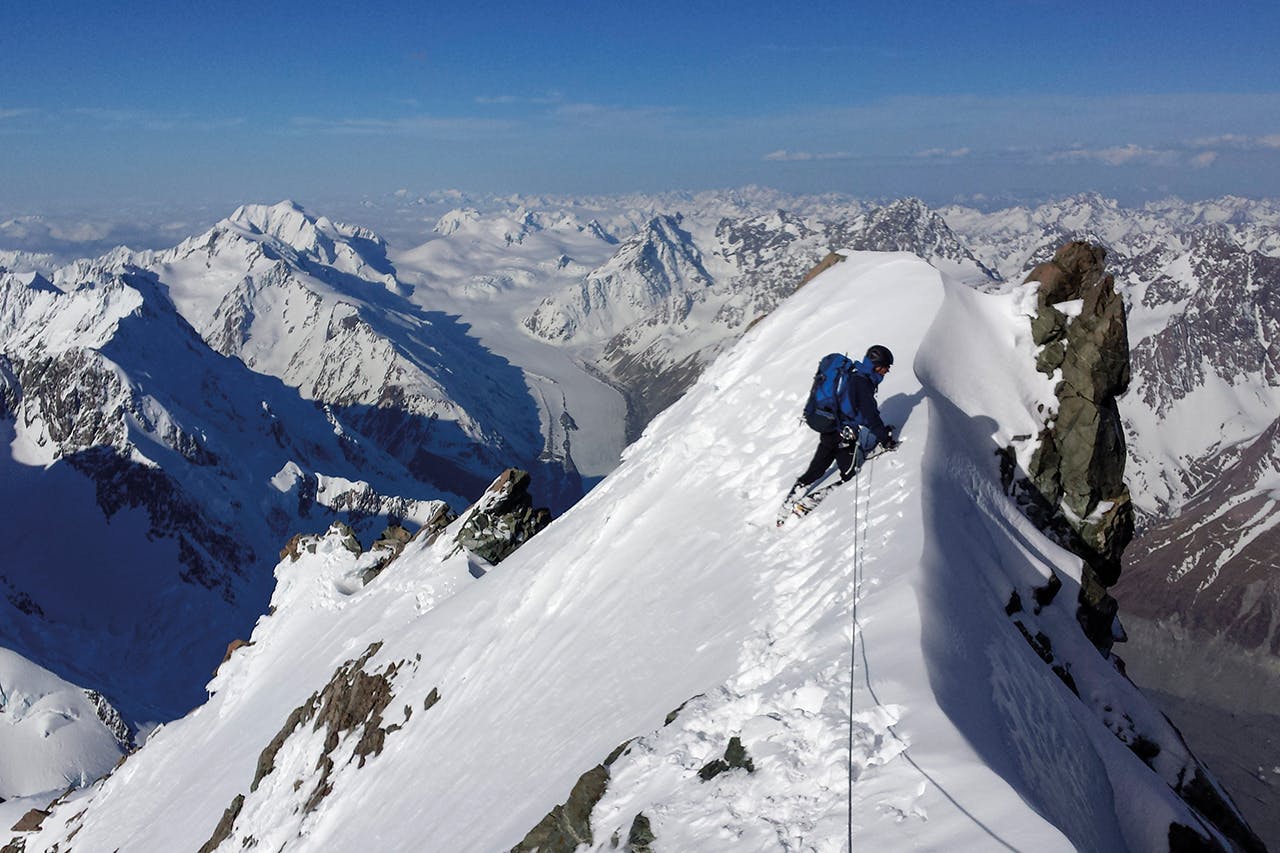
Almost at the top, Daniel MacKay feels the burn in his calves
Fyfe was 34 when he summited Aoraki, but it isn’t just an achievement for the young. With no previous alpine experience Jo Morgan, at 58, decided she wanted to climb 3000m summits. Since making that decision and completing a climbing course she’s become addicted and Aoraki is one of 12 she’s now conquered. She has found the experience gives her an adrenalin rush – a legal high – and when she flew to Pioneer Hut for her first ever alpine trip, she thought she’d found paradise. But Morgan recommends going with a guide if you’re not an experienced alpinist.
“A professional guide will look after you, give advice, make sure the knots are right, the anchors are right and I found that, for me, it was money well spent.
“Even though I’ve climbed many of the 3000m peaks, I wouldn’t consider myself to be professional or adequate enough to go climbing without the help of a guide.”
Morgan says being “a runt” has helped her because she hasn’t had much weight to carry to the top each time, and being active in everyday life is important for ploughing on when things get gruelling.
“People have said to me farmers make the best climbers – they work physically all day and are good at hammering things so their use of an ice axe is really good, so anyone in a physical type of job is at an advantage.
“But if anyone can do a full day’s physical work, whether it’s gardening, tramping, or whatever, then you’re fit enough to climb and the rest of it comes from your attitude. With many things in life people think they can give up whatever isn’t comfortable but climbing’s one of those things that, once you set out, you can’t give up.”
Daniel Mackay was in good physical shape before he decided to climb Aoraki/Mt Cook. He’d done a lot of mountain biking, but had limited alpine experience. He believes if someone’s in good shape, it shouldn’t take more than a year to prepare for the climb.
Mackay had his own training methods for the Southern Alps adventure, some of which were a little peculiar: “I’ve found in the past that I struggle with high stepping with a pack and walking steep and rocky terrain downhill. To improve these areas I devised a work-out of hopping up and down a flight of stairs on one leg.
Despite his training efforts, Mackay realised he hadn’t put enough effort into his calves. “Calf strength is really important for standing on the front points of crampons and I was a long way short of what was needed,” he said.
Mackay picked up the mountain skills fairly quickly and says dealing with exposure was the toughest nut to crack.
“Exposure in this setting is the eerie feeling of realising that there is a lot of empty air below.
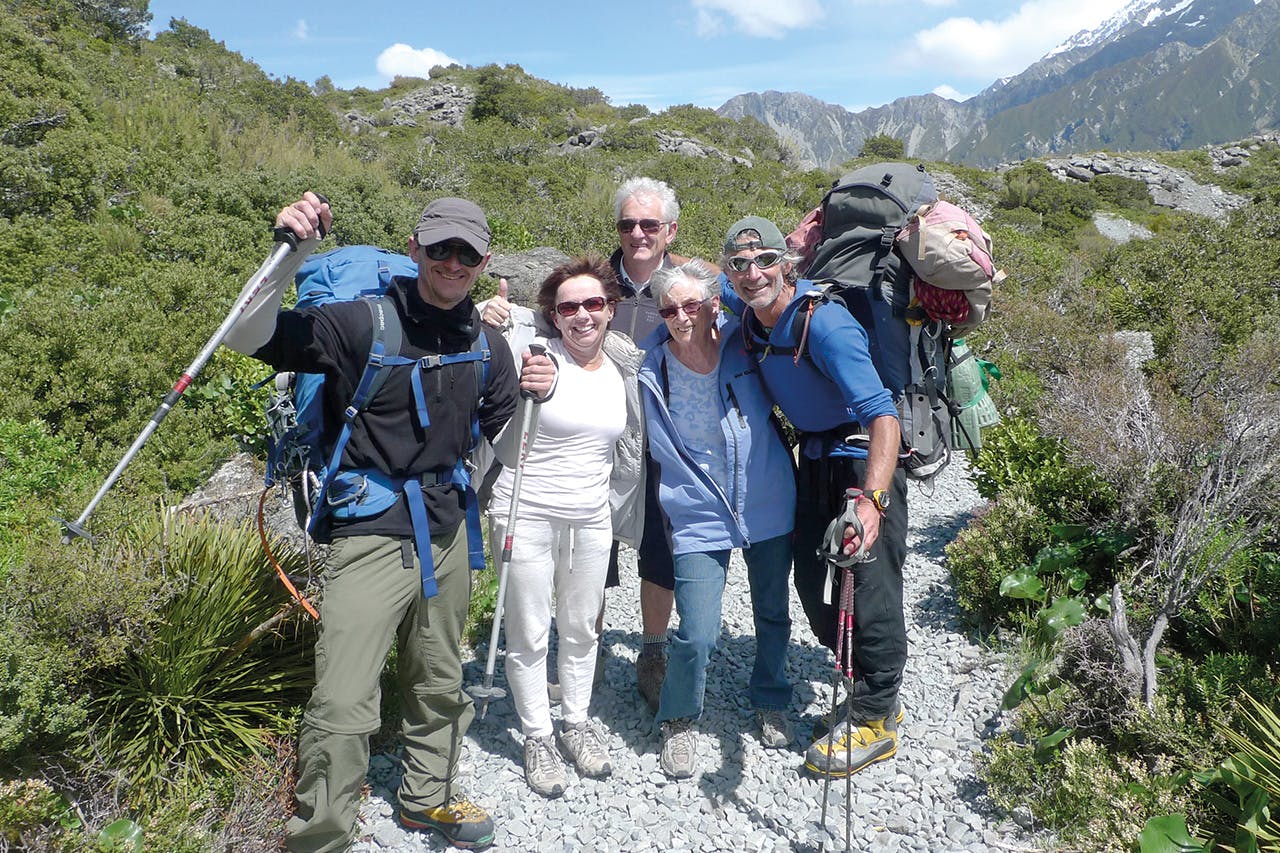
Relieved family members embrace Mike Fyfe (left) and his guide Marty Schmidt after the successful trip.
“Rock climbers will be familiar with the heart-pounding, palm-sweating moments when a glance below your feet reveals a valley floor hundreds of metres below with nothing but air in between. Even thinking about some climbs I’ve done gives me sweaty hands.”
So for the likes of Dan Kearney and other trampers who hope one day to have a crack at climbing New Zealand’s highest, the message seems to be that it’s not as daunting as you may think.
The skills and fitness derived from tramping have provided a jump-start to many a Aoraki/Mt Cook climber, but a good deal of commitment is also required to ensure you reach that minimum fitness level and learn those basic ice skills. You’ll also have to part with a few thousand dollars, of course.
But perhaps a year’s dedication to improving fitness, a week or two’s dedication to learning the ropes and a temporarily decimated bank account is a price worth paying to be able to look proudly at the iconic, giant, snow-capped pyramid and say: “I knocked that bastard off.”
The summit – how to get there
The most common way to ascend Aoraki/Mt Cook is via the Linda Glacier. It requires at least three climbing days – here’s a breakdown of how a typical trip might unfold.
- Fly to Plateau Hut (2200m)
- Climb the relatively gentle (10-30˚ gradient) Linda Glacier by torchlight, starting at 1am
- Climb the Linda Shelf at dawn (30-35˚) – this is more challenging and requires good crampon skills
- Climb the 150m high Summit Rocks (60˚) – the technical crux providing a thrilling mix of rock snow and ice climbing
- Ascend the Summit Ice Cap (25-25˚) to the top – follow the knife-edge summit ridge to the top of New Zealand
- Descend via the same route with some great abseiling and arrive at Plateau Hut 14-20 hours after you left





